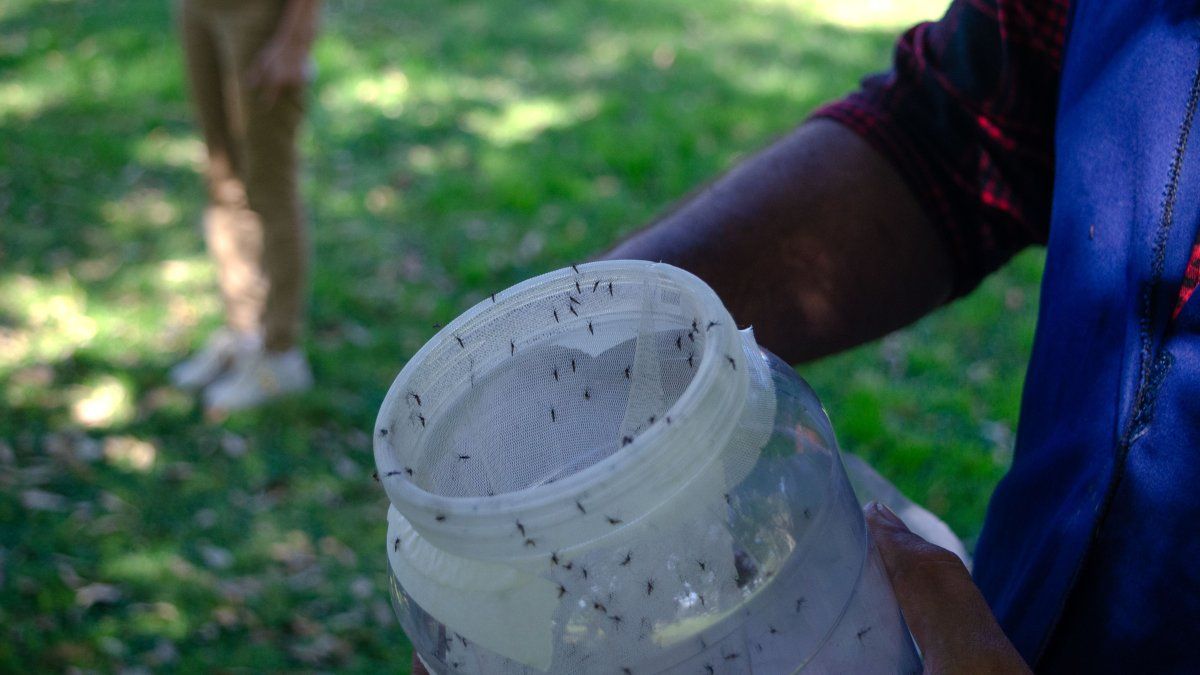The National Atomic Energy Commission (CNEA)in an agreement with the municipality of Ezeiza, released 25,000 sterile male mosquitoes in Barrio Uno for the ecological control of Aedes aegyptivector of diseases such as dengue, zika and chikungunya fever. This is a mark-release-recapture trial supervised by the International Atomic Energy Agency (IAEA)
The specimens will be fluorescent and will be tinted orange or green. Males do not bite or infect, so they do not represent risks and It is important not to kill them. The agreement implements a interinstitutional program to develop the application of the Sterile Insect Technique (SIT). The objective is reduce the risk of diseases vectors like dengue.
For purposes of November is planned massive release of mosquitoes in the 40 hectares of Barrio Unowith batches of 80,000 per week for a year. The positive impact of the SIT is expected to be recorded after the first four months.
What is the TIE methodology
The TIE is a method used to control pests of insects that damage agricultural production or that transmit diseases. It is an ecological technique, that is no use of pesticides, and consists of breeding males in the laboratory sterilized with ionizing radiation. When they mate with wild females, they do not produce offspring. In this way, the insect population is progressively reduced.
Mosquito release video.mp4
SIT is an ecological technique since it does not use pesticides.
CNEA
The SIT is already used effectively against the fruit fly pest in the Cuyo region. There are also successful cases of its use against Aedes aegypti in United States, Spain, Italy, Singapore, China, Indonesia, Malaysia, Portugal, Croatia, Switzerland, Chile, Brazil and Mexico.
It is important to highlight the importance of sustaining prevention and control measures to comprehensively address the dengue epidemic throughout the year.
The project to control the population of Aedes aegypti
It is a project funded by CNEAwith contributions from the IAEA and the Balseiro Foundation in equipment, supplies, training and technical advice. At the same time, municipal institutions collaborate with facilities, logistics and personnel to monitor mosquito traps.
In addition, CNEA plans to carry out more mosquito releases on a pilot scale in different areas of the country. There is also the possibility that jurisdictions interested in bringing the technique to their territories submit their requests to the agency.
In 2016, the IAEA convened the CNEA to participate in a project to apply SIT and control the population of Aedes aegypti in Latin America. Since then, Research and trials are being carried out at the Ezeiza Atomic Center (CAE)where the Department of Agricultural Applications It has a mosquito breeding laboratory.
Source: Ambito
I am a 24-year-old writer and journalist who has been working in the news industry for the past two years. I write primarily about market news, so if you’re looking for insights into what’s going on in the stock market or economic indicators, you’ve come to the right place. I also dabble in writing articles on lifestyle trends and pop culture news.




